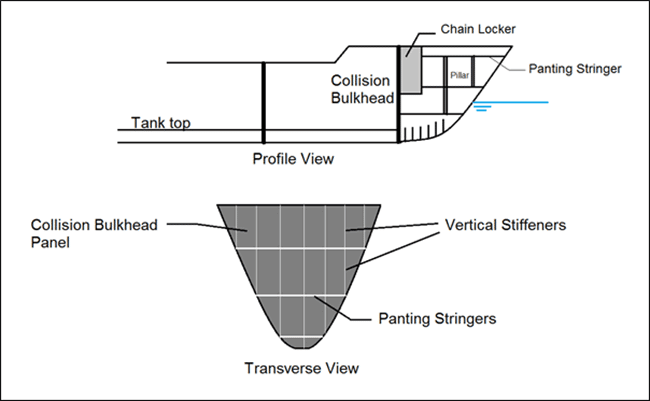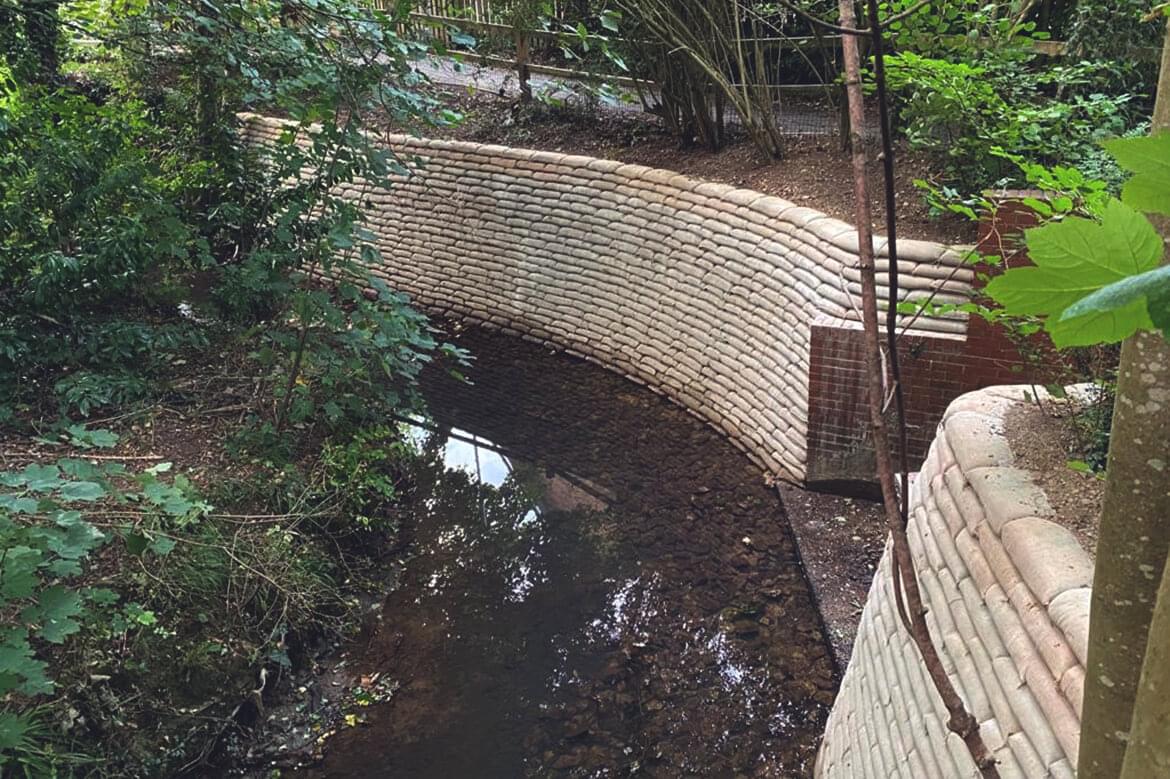Bulkhead on Lake Livingston: A Comprehensive Guide to Modern Building Practices
Checking Out the Various Uses Bulkhead Frameworks in Modern Architecture
Bulkhead structures play a substantial function in contemporary style, offering both aesthetic and useful objectives. They can specify rooms, boost storage solutions, and improve lights. In industrial setups, they act as centerpieces that show brand name identification - Bulkhead on Lake Livingston. Additionally, their assimilation often supports audio management and sustainable practices. Understanding the complete scope of their applications discloses much regarding contemporary design fads and individual experience. What cutting-edge usages of bulkheads might arise in the future?
Specifying Bulkhead Frameworks
Bulkhead structures play a crucial role in contemporary architecture, working as crucial parts in different structure styles. These frameworks are generally defined as increased ceilings or platforms, usually utilized to hide mechanical systems, circuitry, or plumbing. Bulkheads can be located in both domestic and commercial settings, where they supply a smooth blend of capability and visual appeals. Their style can incorporate lighting components and other ornamental elements, improving the general aesthetic appeal of a space.
Usually built from materials such as metal, drywall, or wood, bulkheads can be personalized to fit the architectural design and requirements of the structure (Bulkhead on Lake Livingston). They offer not just to conceal unsightly infrastructure but likewise to develop specified areas within open spaces. By taking care of the flow of a room, bulkheads add to the spatial company, making them a substantial facet of modern architectural method. Their interpretation envelops both visual and practical dimensions.
Functional Applications in Residential Design
Bulkhead structures play a vital duty in household style by promoting room optimization approaches that make best use of usable locations. Additionally, they add aesthetic style components that enhance the visual appeal of living rooms. Additionally, these frameworks provide essential structural assistance options, ensuring the honesty and security of the home.
Room Optimization Methods
As modern-day residential styles progressively prioritize effective use of space, innovative approaches emerge to optimize performance without sacrificing aesthetic appeals. One noticeable strategy involves the assimilation of bulkhead structures, which can mark locations while giving important storage services. These structures can be used to create vertical storage space systems that enhance both organization and ease of access. Additionally, multi-functional furnishings, such as exchangeable sofas and foldable tables, complements bulkhead layouts, allowing spaces to adjust to differing demands. Open layout even more optimize spatial flow, urging versatility in operation. Integrating built-in shelving and recessed lights within bulkheads also adds to a structured setting, guaranteeing that every square inch of space is used properly and sympathetically within the overall style.
Visual Design Aspects

Architectural Support Solutions
In contemporary residential layout, an effective structural support service is important for keeping the stability of areas while maximizing format and functionality. Bulkhead frameworks play a considerable duty in this scenario, functioning as both assistance and dividing elements. They can hide mechanical systems, such as plumbing and electrical wiring, while supplying support to the ceiling and floor systems. By tactically putting bulkheads, architects can create defined areas within open layout, improving functionality without jeopardizing structural stability. Additionally, these structures can fit lights components, adding to both aesthetic appeals and practicality. To summarize, bulkhead structures are vital in domestic design, using functional support options that improve both the capability and aesthetic charm of living spaces.
Enhancing Aesthetics in Business Areas
When industrial areas accept innovative bulkhead structures, they not just specify physical limits but likewise greatly improve the general aesthetics of the setting. These architectural aspects function as aesthetic focal factors, attracting interest and producing a feeling of intrigue. By including varied products such as glass, timber, or steel, bulkheads can show a brand name's identification and mission, contributing to a cohesive design.
The strategic placement of bulkheads can manipulate light and shadow, adding depth and measurement to or else level rooms. This interaction can transform an industrial location into an inviting ambience, encouraging consumer interaction. Additionally, the usage of shade and appearance in bulkhead layout can evoke specific feelings, boosting the general consumer experience. Inevitably, the thoughtful integration of bulkhead structures boosts the visual charm of business areas, making them not only functional but also visually enchanting, therefore promoting a long-term impact on visitors.
Acoustic Performance and Sound Administration
Reliable acoustic efficiency plays an important function in modern-day design, especially within business areas where sound monitoring is critical. Bulkhead frameworks can substantially boost acoustic high qualities by soaking up noise, minimizing echo, and mitigating sound transfer between areas. These attributes are particularly useful in environments such as workplaces, cinemas, and restaurants, where clear interaction and an enjoyable auditory experience are vital.
The calculated placement and layout of bulkheads can help produce sound-buffer zones, properly isolating loud areas from quieter ones. Products utilized in bulkhead building and construction, such as acoustic panels and soft coatings, add to their sound-dampening capacities. In addition, the incorporation of bulkheads enables the combination of sound-absorbing components without endangering visual charm. By resolving acoustic performance, engineers can create harmonious atmospheres that enhance comfort, boost user experience, and advertise performance, making bulkheads an essential part in the layout of modern business rooms.
Incorporating Bulkheads for Reliable Space Usage
Often neglected, the assimilation of bulkheads in architectural design can greatly enhance area utilization in contemporary structures. These structural aspects offer numerous useful functions, offering a method to hide mechanical systems, electrical wiring, and plumbing without endangering visual appeals. By strategically positioning bulkheads, designers can develop specified areas within open floor strategies, thereby promoting much better organization and circulation.
Bulkheads can include storage remedies and lights features, making best use of the performance of or else squandered vertical space. In residential setups, they may delineate zones such as kitchens or living areas, while in industrial spaces, they can boost the effectiveness of layouts by plainly marking pathways and view publisher site workspace.
Inevitably, the thoughtful integration of bulkheads contributes to a much more visually appealing and organized setting, enabling versatile spaces that can advance with the demands of their passengers. This strategy not just optimizes space but also cultivates an extra unified communication between type and feature.
Bulkheads in Public Architecture

Building Visual Enhancements
While many architectural elements go for functionality, bulkheads in public style serve a double objective by boosting aesthetic charm. These frameworks usually create visual rate of interest with their layout, incorporating seamlessly with bordering aspects. By employing various materials, textures, and colors, bulkheads can add to an one-of-a-kind identity for public areas, such as airport terminals, museums, and libraries. Their calculated placement aids to define locations, leading site visitors while adding deepness to the general style. Furthermore, bulkheads can emphasize lights, developing dynamic atmospheres that alter throughout the day. This aesthetic improvement not only boosts the visitor experience but also fosters a local color, making bulkheads a crucial factor to consider in contemporary public style. In general, bulkheads symbolize the combination of type and function.

Architectural Support Solutions
As designers look for cutting-edge methods to improve the structural honesty of public rooms, bulkheads emerge as essential parts in the design and construction process. These frameworks give critical support, especially in areas subject to hefty foot web traffic or dynamic loads. By dispersing weight uniformly, bulkheads assist prevent structural failure while allowing for flexible design choices. In large venues, such as stadiums and convention centers, bulkheads are frequently incorporated right into the general building framework, making sure stability and safety. In addition, they can assist in the unification of energies and mechanical systems, adding to the effectiveness of space use. Inevitably, bulkheads stand for a critical remedy in contemporary public design, enhancing both performance and safety in community-focused environments.
Environmental Protection Steps
Integrating environmental security procedures right into public style has actually become increasingly vital as metropolitan designers focus on sustainability alongside structural support. Bulkhead frameworks serve a double objective in this regard, working as barriers against erosion and flooding while concurrently improving the visual appeal of metropolitan landscapes. Their layout often consists of natural environments such as greenery, which can boost air quality and give habitats for wild animals. Furthermore, bulkheads can be engineered with absorptive materials that permit water absorption, reducing runoff and promoting groundwater recharge. This combination of environmental Read Full Article factors to consider not only preserves the atmosphere yet additionally fosters neighborhood strength versus environment adjustment. By utilizing bulkheads efficiently, architects contribute to sustainable city advancement that straightens with contemporary environmental objectives.
Future Trends in Bulkhead Layout
Emerging fads in bulkhead design reflect a growing emphasis on sustainability, development, and functionality in modern-day architecture. Developers are increasingly integrating eco-friendly materials, such as recycled composites and bioplastics, to minimize environmental impact. Furthermore, the combination of wise modern technology is coming to be common, making it possible for bulkheads to offer multi-functional functions, including energy storage and climate control.
In city settings, modular bulkhead systems are obtaining traction, supplying flexibility in style and ease of installment. These systems can be adapted to numerous landscapes, enabling reliable room application. Furthermore, aesthetic considerations are developing; bulkheads are currently being designed to boost aesthetic charm, often incorporating creative aspects that reverberate with local society.
As environment resilience ends up being a priority, future bulkhead styles will likely focus on flood defense and stormwater management, guaranteeing structural honesty while dealing with ecological challenges. This change signifies an alternative strategy to style that satisfies both human demands and ecological duties.
Often Asked Concerns
What Products Are Generally Used for Bulkhead Building?
Common products for bulkhead construction consist of concrete, steel, wood, and composite products. These alternatives supply sturdiness, structural honesty, and resistance to environmental aspects, making them suitable for various applications in building and construction and design projects.
Exactly How Do Bulkheads Impact Structure Energy Efficiency?
Bulkheads enhance constructing energy efficiency by supplying thermal insulation and minimizing air leak (Bulkhead on Lake Livingston). They aid keep Click This Link interior temperature levels, therefore lowering heating and cooling down needs, inevitably causing reduced energy expenses and boosted environmental sustainability
Exist Any Building Regulations Certain to Bulkhead Structures?
Yes, developing codes specific to bulkhead structures exist, varying by area. These policies typically deal with safety and security, structural integrity, and availability, making sure that bulkheads meet required criteria for construction and layout within a provided territory.
Can Bulkheads Be Easily Modified or Removed Later On?
Bulkheads can typically be customized or removed, depending on their design and construction. Such modifications may need mindful planning and adherence to building codes to ensure architectural honesty and security are kept throughout the process.
What Are the Prices Connected With Mounting Bulkhead Frameworks?
The expenses linked with setting up bulkhead structures can differ substantially, usually affected by products, design complexity, and labor. Typically, expenditures range from moderate to high, relying on the project's specific demands and location.
Bulkhead structures play a vital duty in contemporary architecture, serving as crucial components in different building designs. Bulkhead structures play a crucial function in household layout by promoting room optimization methods that maximize functional areas. Often ignored, the combination of bulkheads in building style can significantly improve room application in contemporary buildings. As architects look for ingenious means to enhance the structural integrity of public spaces, bulkheads arise as necessary parts in the style and building process. The costs associated with mounting bulkhead structures can vary significantly, normally influenced by products, layout complexity, and labor.